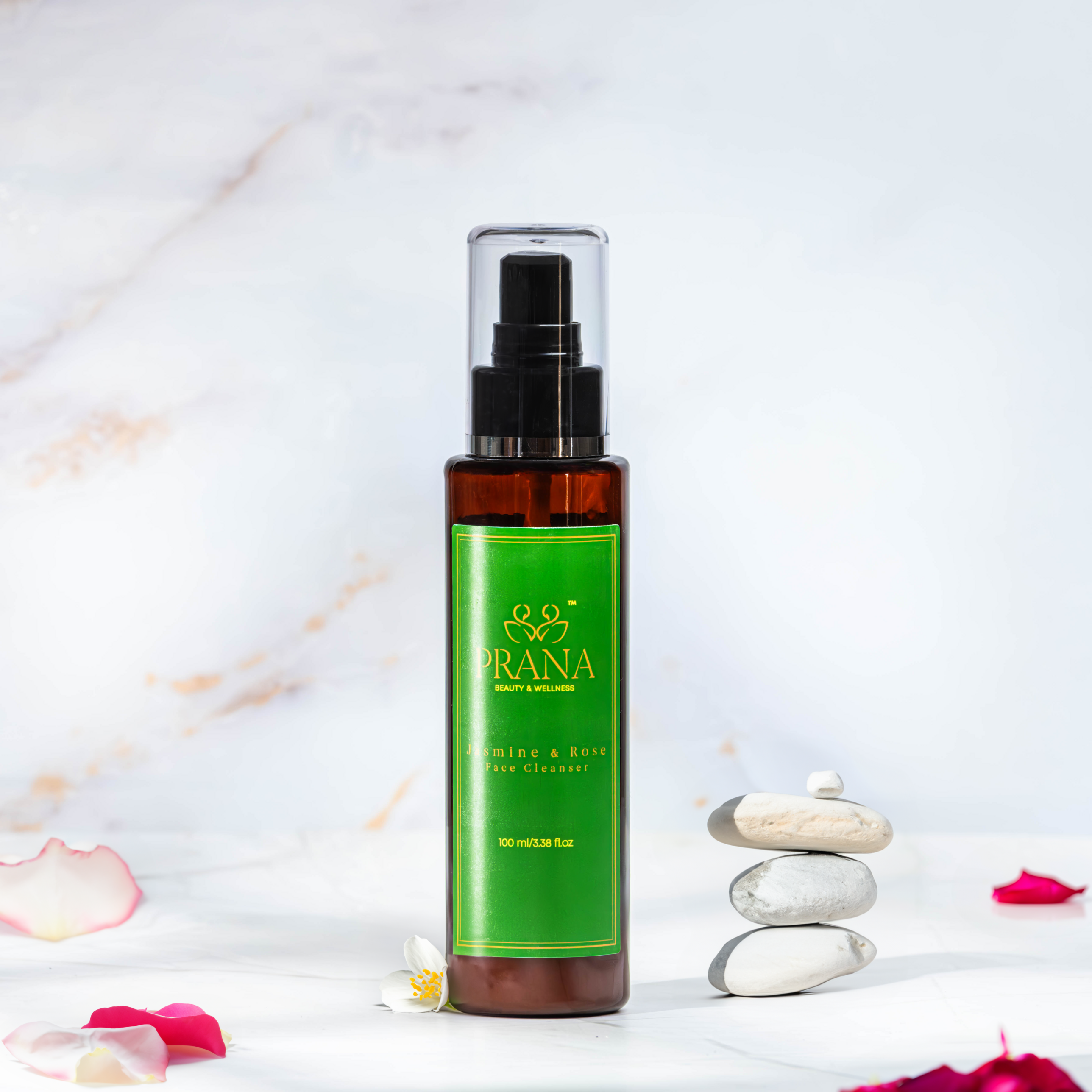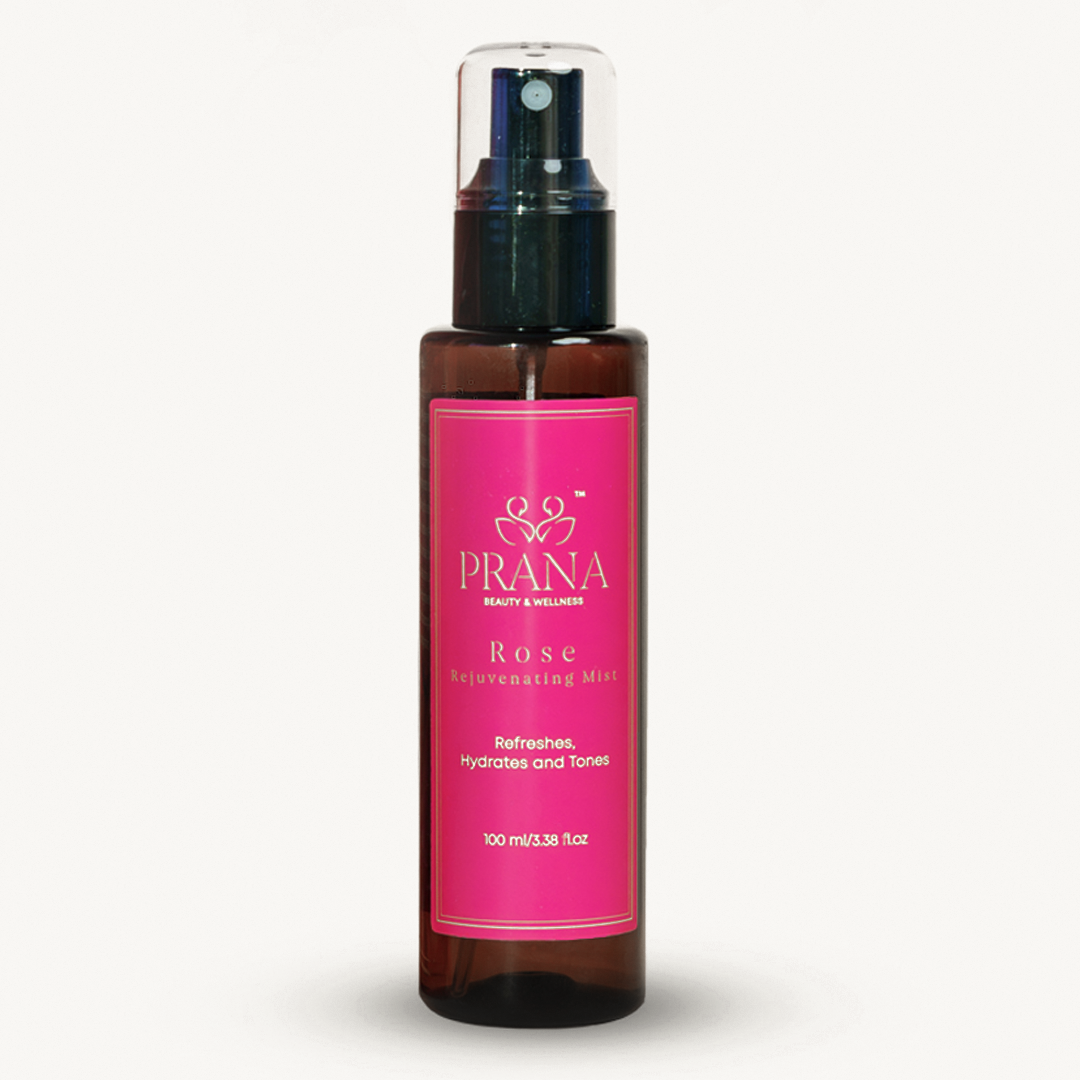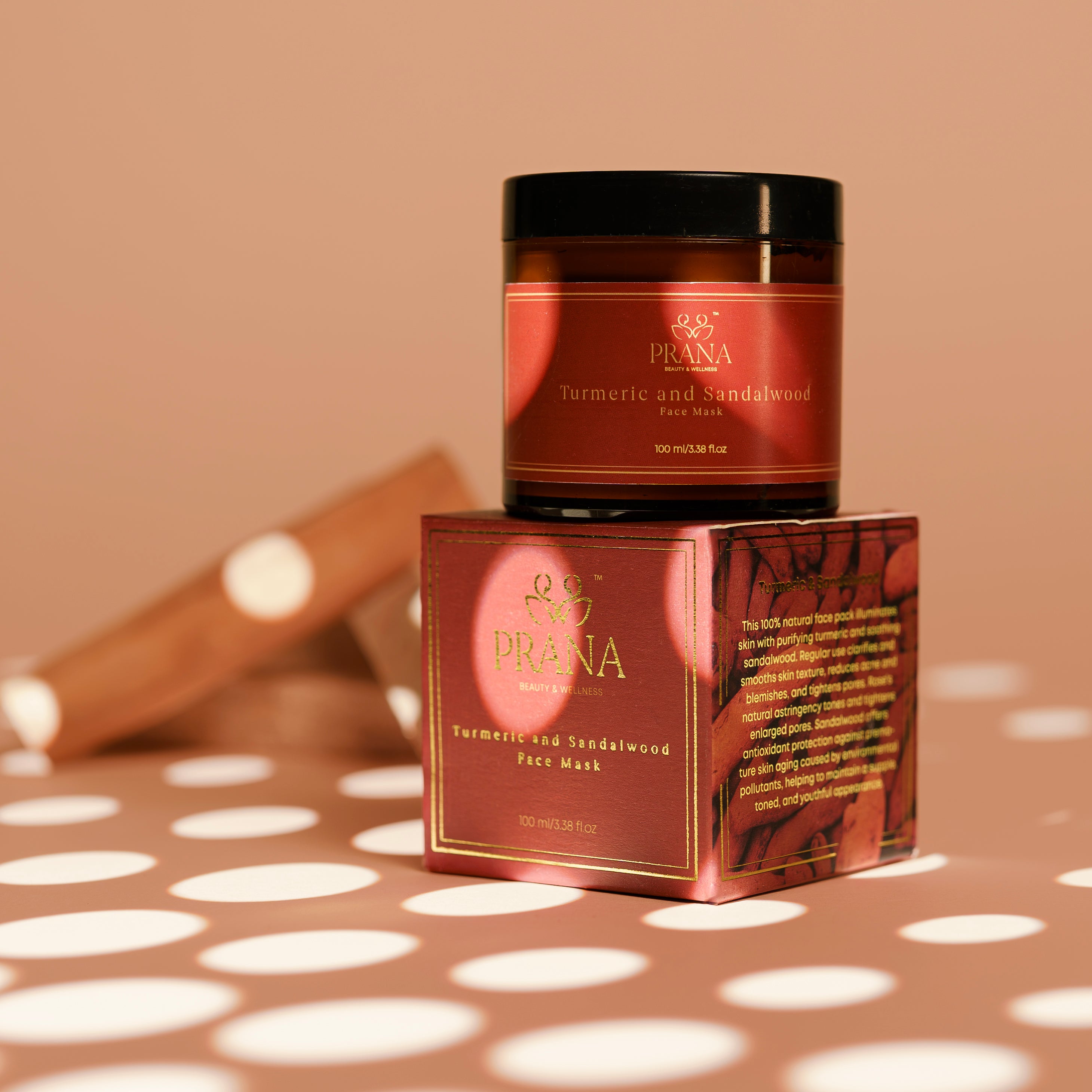5 Essential Bath and Body Care Tips for Radiant Skin

The ancient wisdom of Ayurveda teaches us that true beauty emanates from within, yet can be nurtured through mindful external practices. Your skin—the body's largest organ—deserves the same loving attention you give to your face. With the right Ayurvedic bath and body care routine, you can transform daily cleansing from a mundane task into a sacred ritual that nourishes both body and spirit.
These five essential tips draw from centuries-old Ayurvedic traditions, offering a holistic approach to body care that goes beyond mere cleansing. By incorporating these practices into your routine, you'll not only achieve radiant skin but also create moments of tranquility in your day-to-day life.
Tip 1: Abhyanga – The Sacred Pre-Bath Massage
In Ayurveda, body care begins with Abhyanga, a therapeutic self-massage with warm oil that balances the doshas (Vata, Pitta, and Kapha) while nourishing the seven layers of tissue. This ancient practice isn't merely about moisturizing—it's a profound act of self-love that stimulates circulation, removes toxins, and promotes overall wellbeing.
Benefits of Daily Abhyanga
-
Stimulates lymphatic drainage to eliminate toxins
-
Improves blood circulation for a natural glow
-
Calms the nervous system and reduces stress
-
Nourishes tissues deeply for supple skin
-
Balances doshas according to your constitution
How to Perform Abhyanga
Begin by warming your chosen oil slightly. Starting at your extremities, massage toward your heart using long strokes on limbs and circular motions on joints. Pay special attention to areas where Vata tends to accumulate—feet, hands, and lower back. Allow the oil to penetrate for 15-20 minutes before bathing.
Discover the Perfect Oil for Your Dosha
For Vata types, try our warming Sesame Body Massage Oil. Pitta constitutions benefit from cooling Coconut Oil, while Kapha types thrive with stimulating Almond Oil blends.
DIY Alternative
Create your own massage oil by warming organic sesame oil and infusing it with calming lavender for Vata, cooling rose for Pitta, or invigorating eucalyptus for Kapha. Store in a glass bottle and warm before each use.
Tip 2: Snana – The Ritual Bath
In Ayurveda, bathing (Snana) is far more than cleansing—it's a sacred ritual that purifies both body and mind. The ancient texts describe bathing as a therapeutic activity that removes fatigue, enhances vitality, and promotes longevity when performed mindfully.
Dosha-Specific Bathing Rituals
For Vata (Air & Ether)
Use warm water and add nourishing ingredients like milk, honey, and a few drops of lavender essential oil. This grounding ritual helps calm the nervous system and moisturizes dry Vata skin.
For Pitta (Fire & Water)
Choose cool to lukewarm water and add cooling elements like rose petals, sandalwood powder, and fresh mint leaves. This calms inflammation and soothes Pitta's tendency toward sensitivity.
For Kapha (Earth & Water)
Use warm to hot water with stimulating additions like ginger powder, mustard seed, and eucalyptus oil. This energizes sluggish circulation and helps reduce Kapha's tendency toward congestion.
The Panch Amrit Snana
For a truly luxurious experience, try the "Five Nectar Bath" once weekly. Combine 2 tablespoons of milk, 1 tablespoon of yogurt, 1 teaspoon of honey, 1 tablespoon of ghee, and 1 tablespoon of sugar. Apply this mixture to your body before soaking in warm water for 15-20 minutes.
Elevate Your Bathing Experience
Transform your daily bath into a luxurious ritual with our Ayurvedic bath products, formulated with pure herbs and flowers to balance your unique constitution.
DIY Alternative
Create a simple bath powder by grinding equal parts dried rose petals, orange peel, and neem leaves. Mix one tablespoon with water to form a paste and use as a natural body cleanser during your bath.
Tip 3: Prakshalan – Gentle Cleansing
Conventional soaps with harsh chemicals strip away the skin's natural protective barrier, disrupting its delicate pH balance. Ayurveda advocates for Prakshalan—gentle cleansing that purifies without depleting the skin's essential moisture and natural oils.
The Ayurvedic Approach to Cleansing
Traditional Ayurvedic cleansers utilize natural ingredients like gram flour (besan), herbs, and plant-derived cleansing agents such as reetha (soapnut) and shikakai. These elements effectively remove impurities while maintaining the skin's natural moisture balance.
Understanding Your Skin Type
-
Vata Skin: Typically dry, thin, and prone to roughness. Needs rich, moisturizing cleansers.
-
Pitta Skin: Often sensitive, warm, and prone to redness. Benefits from cooling, calming cleansers.
-
Kapha Skin: Usually oily, thick, and prone to congestion. Requires stimulating, purifying cleansers.
For optimal results, cleanse your body using gentle circular motions, paying special attention to areas that accumulate more sweat and oil. Rinse thoroughly with lukewarm water—never hot, as extreme temperatures can damage the skin's protective barrier.
Discover Natural Cleansing
Our sulfate-free body cleansers are formulated with traditional herbs and natural cleansing agents that purify without stripping your skin's essential moisture.
DIY Alternative
Create a simple ubtan by mixing 2 tablespoons of gram flour , 1 teaspoon of turmeric, and 1 tablespoon of sandalwood powder. Add yogurt or milk to form a paste and use as a gentle body cleanser 1-2 times weekly.
Tip 4: Hasta-Pada Seva – Honoring Hands and Feet
In Ayurveda, the hands and feet are considered sacred gateways—they contain vital marma points (energy centers) that connect to every organ in the body. Despite their importance, these hardworking extremities often receive the least attention in our body care routines.
The Importance of Hand and Foot Care
Your hands and feet contain fewer oil glands than other parts of your body, making them prone to dryness, cracking, and premature aging. Additionally, these areas experience significant daily stress through constant use and exposure to environmental elements.
Weekly Hand Ritual
Soak hands in warm water with a pinch of turmeric and few drops of lemon juice for 5 minutes
Gently exfoliate with a mixture of sugar and honey using circular motions
Massage with warm sesame or coconut oil, paying attention to each finger
Apply a nourishing hand cream before bedtime and wear cotton gloves overnight
Weekly Foot Ritual
Soak feet in warm water with Epsom salt and 5-7 drops of tea tree oil for 15 minutes
Use a natural pumice stone to gently remove dead skin from heels and soles
Apply a paste of gram flour and turmeric, rinse after 10 minutes
Massage with sesame oil, focusing on pressure points
Nourish Your Extremities
Our hand and foot care products are formulated with rich butters, oils, and herbs that deeply nourish while strengthening nails and cuticles.
DIY Alternative
Create a nourishing overnight treatment by mixing equal parts coconut oil and raw honey with a few drops of lavender essential oil. Apply to hands and feet before bed and cover with cotton socks and gloves.
Tip 5: Anupana Kramah – The Art of Layering
In Ayurveda, the concept of Anupana refers to the vehicle or medium through which benefits are delivered. When applied to body care, this translates to the strategic layering of products to maximize absorption and effectiveness—moving from the lightest to the heaviest formulations.
The Science of Layering
Unlike simply applying a heavy cream that sits on the surface, proper layering allows each product to penetrate and deliver its unique benefits. This approach ensures that active ingredients reach their target tissues and provide comprehensive nourishment.
Step 1: Hydration
Begin with water-based formulations like body mists or toners containing rose water, aloe vera, or herbal infusions. These prepare the skin to receive subsequent treatments and provide initial hydration.
Step 2: Treatment
Apply lightweight oils, serums, or treatment products that target specific concerns. These penetrate deeply to deliver active ingredients where they're needed most.
Step 3: Sealing
Finish with richer creams, balms, or butters that create a protective barrier, sealing in previous layers and providing long-lasting moisture retention.
Dosha-Specific Layering
Customize your layering approach based on your dominant dosha:
-
Vata: Focus on rich, nourishing layers with emphasis on oils and butters to combat dryness
-
Pitta: Prioritize cooling, soothing layers with aloe vera and coconut-based products
-
Kapha: Use lighter layers with stimulating ingredients like ginger and eucalyptus
Perfect Your Layering Ritual
Discover our complete body care collections, thoughtfully formulated to work in harmony when layered for maximum benefits.
DIY Alternative
Create a simple three-step layering system using rose water as your hydrator (step 1), jojoba oil infused with your favorite herbs as your treatment (step 2), and a mixture of shea butter and coconut oil as your sealer (step 3).
Creating Your Holistic Self-Care Ritual
The true essence of Ayurvedic body care lies not just in the individual practices but in weaving them together into a cohesive ritual that honors your unique constitution and current needs. By incorporating these five essential tips into your routine, you create a powerful practice that nurtures both body and spirit.
Remember that consistency is key—even a simplified version of these practices performed regularly will yield greater benefits than an elaborate ritual done occasionally. Begin by incorporating one tip at a time, allowing it to become a natural part of your routine before adding another.
As you embrace these ancient Ayurvedic bath and body care tips, you'll discover that they offer far more than just physical benefits. They provide precious moments of mindfulness in your day, opportunities to reconnect with yourself, and a deeper appreciation for the wisdom contained in time-honored traditions.
Begin Your Ayurvedic Body Care Journey
Explore our complete range of authentic Ayurvedic body care products, thoughtfully crafted with traditional herbs and luxurious natural ingredients.
FAQs
How often should I perform Abhyanga (oil massage)?
Ideally, Abhyanga should be performed daily for maximum benefits. However, even practicing 2-3 times per week will yield significant improvements in skin texture and overall wellbeing. Those with Vata constitutions benefit most from daily practice, while Kapha types may find 2-3 times weekly sufficient.
What water temperature is best for Ayurvedic bathing?
Ayurveda recommends lukewarm water for most constitutions, as extremely hot water can strip the skin of natural oils and disrupt its protective barrier. Pitta types benefit from slightly cooler water, while Vata types may prefer slightly warmer temperatures. Avoid hot showers regardless of your dosha, especially during dry winter months.
Can I adapt these rituals if I'm short on time?
Absolutely! Even abbreviated versions of these practices offer benefits. For a quick routine, try a 5-minute oil massage focusing on feet and hands before your shower, use natural cleansers like the PRANA Jasmine and Rose cleanser.
https://www.pranabeauty.com/products/jasmine-cleanser















